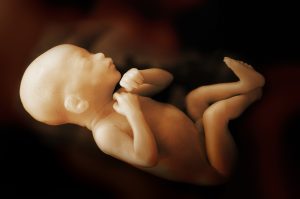
Many of us know that a preborn baby is a new human being, entirely unique from his mother. And we value this preborn baby, and his mother and father, because each of them is created in the image of God.
Yet do we really understand the science behind life? And do we grasp enough of this science to be able to share with our friends and neighbors why we are committed to making life-affirming options available to women in our community?
For example, did you know these facts?
- A baby’s entire DNA is determined at conception. This means his or her eye color, hair color, height, skin tone and even the details of his or her fingerprints are established from the moment the egg and sperm unite.
- The placenta and umbilical cord separate the mother from the baby. The placenta and umbilical cord exist because the baby has a different and entirely separate circulatory system from the mother and their blood must not intermingle. “If something happens, such as a traumatic injury, that causes their blood to mix, it can cause serious complications.”
- Abortion is legal up to 20 weeks in Wisconsin. A 20-week preborn baby is about 10 inches long and has three-inch arms and legs. He or she has unique waking and sleeping patterns and even has a favorite position to sleep in.
For years, I have understood and appreciated the SLED test regarding the preborn. SLED stands for Size, Level of development, Environment and Degree of dependency and states that none of these characteristics determine a person’s value.
But considering a little more of this amazing science equips me to share with family members and friends who may not be as committed to defending all human life.
It was only recently that I learned about why the umbilical cord exists. I had thought it was there to nourish the growing preborn baby – but did not understand its function to keep mother and child separate.
Discussing how the placenta and umbilical cord keep mother and child separate is one way a formerly pro-choice nursing instructor helps her nursing students address this common question:
“Why shouldn’t a woman be able to do what she wants with her own body?”
In telling their instructor what they know about how they recognize the woman and preborn baby are two different beings, these students come to understand that this question does not hold weight.
Most of us are not teaching nursing students about life – but we do have neighbors, friends, co-workers or family members. Some of those we see on a daily basis may wonder why we would be committed to helping provide life-affirming options.
Understanding and being able to share about what science tells us may help some of those we know to understand our compassion for the preborn. Talking about the science of life may help our friends to engage with providing real choices for women and men making difficult pregnancy decisions.